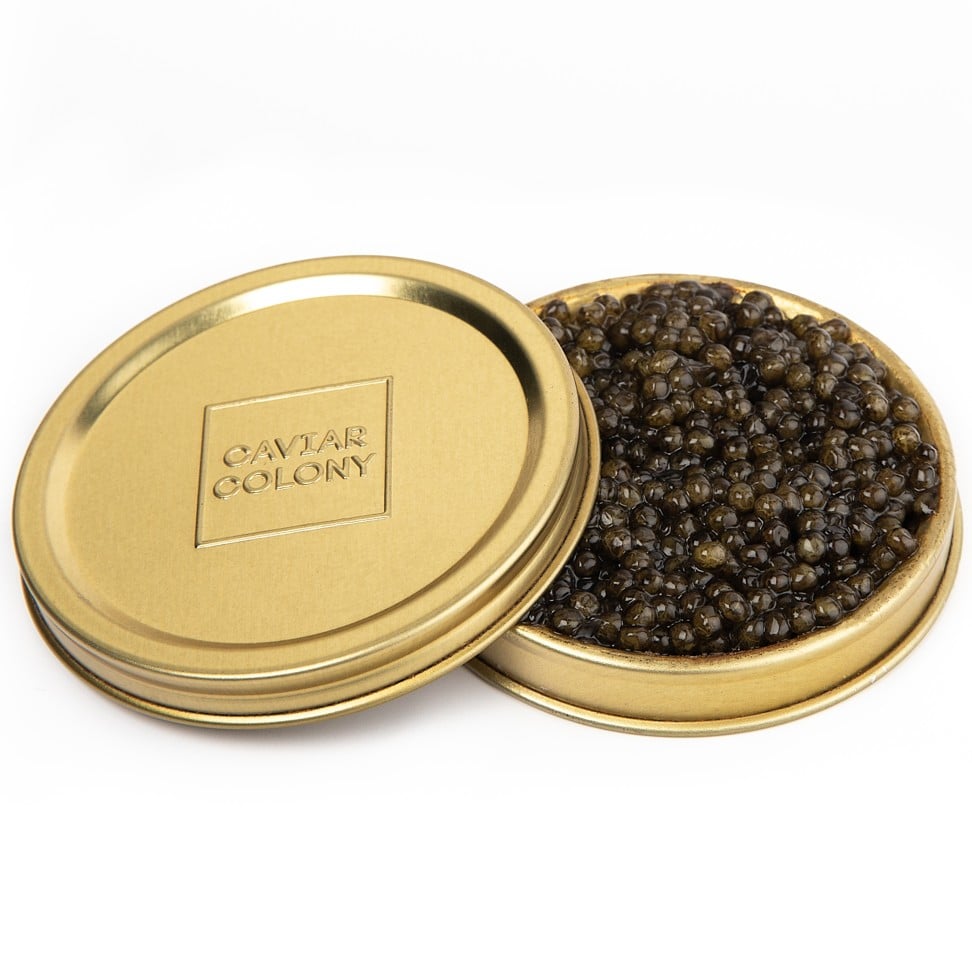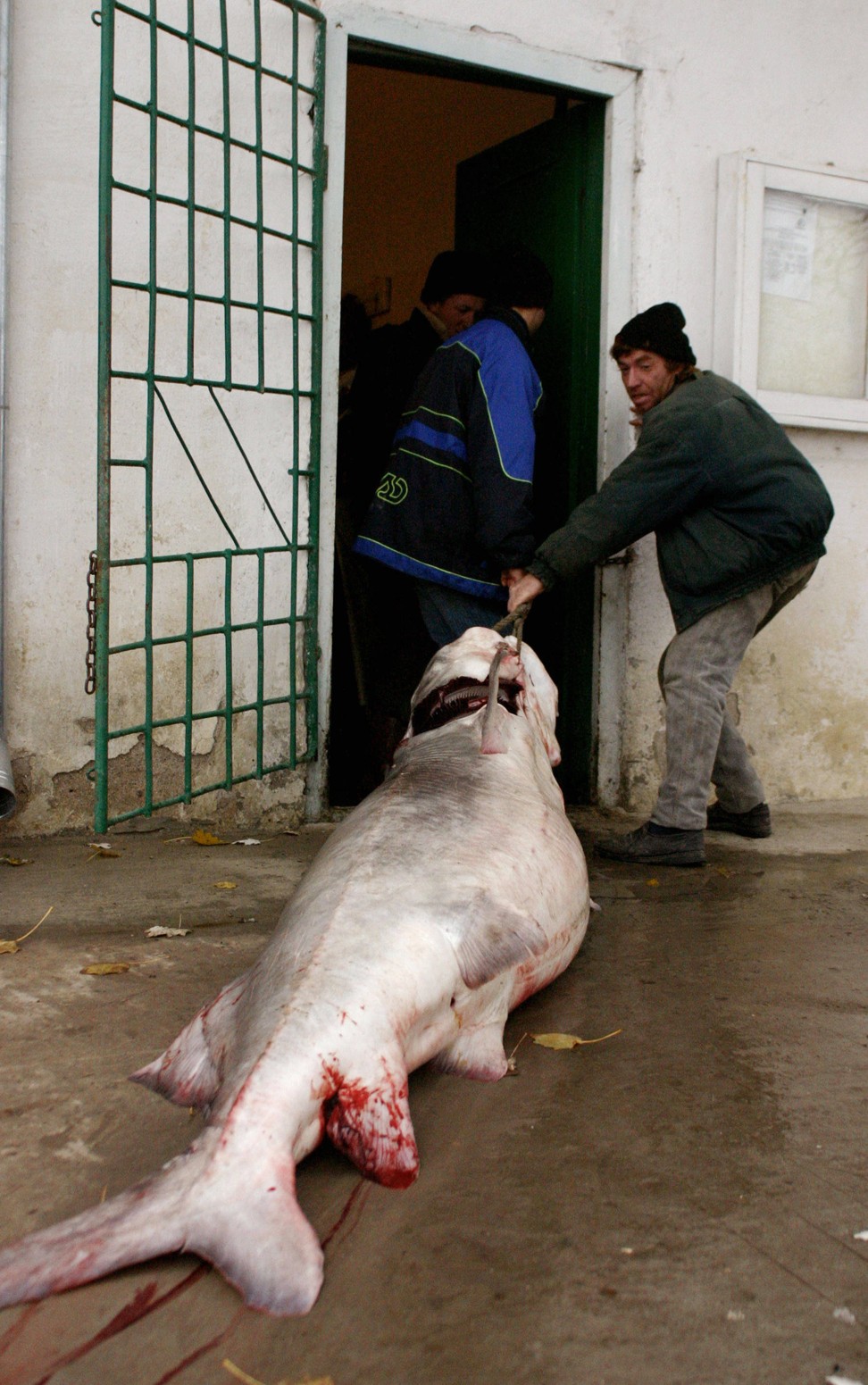
Chinese caviar: the Singapore pair farming ‘black gold’ in Yunnan – and trying to change perceptions
- Two Singaporean entrepreneurs have launched the Caviar Colony brand to gain for farmed Chinese caviar the recognition they say it deserves
- More than 54 per cent of the world’s commercial caviar farms are based in China, but many companies don’t advertise that their caviar is Chinese
More than two decades ago, Benjamin Goh had his first taste of caviar on board a Singapore Airlines flight and was immediately hooked.
“I had beluga caviar – a highly prized [caviar from an] endangered species that’s now banned from being imported into the United States. I enjoyed it together with Brut champagne, and its smooth, buttery flavour blew my mind,” the 51-year-old recalls.
That first taste encouraged him to develop his palate for so-called “black gold”, the most valuable of which was harvested from beluga sturgeon – also known as European sturgeon – in the Caspian Sea.
The serial entrepreneur – who runs a regional go-karting business in Asia, and food and beverage outlets in Singapore, including Italian restaurant 28Wilkie – also kept his eyes peeled for suitable business ventures involving his new favourite gourmet food product.
In 2014, an opportunity came knocking for Goh to showcase to the world high-quality caviar farmed in China. A chance meeting led him to an 800-hectare farm in the mountains of Yunnan province in southwest China, one of the largest caviar farms in the country, which had been in operation for about 20 years.
By then, the sale of caviar from beluga and other wild-caught sturgeon from the Caspian Sea had been banned internationally under the Convention on International Trade in Endangered Species (Cites) because of overfishing. The Yunnan farm was therefore positioned to supply sturgeon eggs to some of the world’s most renowned caviar houses.
Inside Singapore’s private kitchens, where chefs share their food, culture and personalities
“Its location is strategic, with spring water and running water from the mountains creating the optimal environment to naturally raise our farmed sturgeon,” Goh says. So he signed on and became a partner in the farm.

His instincts proved to be spot on. A study by UK-based market research company Technavio forecast the global caviar market would be worth US$1.55 billion by 2021, an increase of almost 75 per cent from 2016.
The report attributed this to growing global demand for luxury products, including rarities such as caviar, with its limited availability and high price tag.
Today, sturgeon are farm-reared in more than 50 countries, including China, the United States, France, Italy and Iran.
Thanks to the freshwater lakes in its unpolluted regions that offer a similar habitat to the sturgeon’s natural homes, China dominates the global market for farmed caviar
More than 54 per cent of the world’s commercial caviar farms are based there, says Goh, citing a study by market research company Orbis Research.

Trade data from Cites shows China exported 136 tonnes of caviar between 2012 and 2017.
Goh is proud of his farmed-in-China brand. He roped in long-time friend Celine Tan to partner with him in launching Caviar Colony this year.
Why Hong Kong restaurants are using Asian farmed caviar
“I saw the potential to introduce quality Chinese caviar to the global market. Celine and I often bounce ideas off each other, and we recognised an opportunity to make caviar more accessible in the market,” Goh says.
The brand offers caviar from five farmed sturgeon species priced from S$50 (US$37) per 10-gram tin.
The five types of caviar include Russian, or Osetra caviar (also called Ossetra or Oscietra caviar), which is the second most prized after beluga – as well as the Amur and Kaluga breeds, which are from China.

The company also offers a Russian hybrid and a Kaluga hybrid caviar, which have a different taste profile from the other three.
Kaluga caviar, commonly called river beluga, is the most expensive at S$110 for 10 grams. With distinctive lustrous black pearls, this caviar has a nutty, umami and savoury mouth feel with a long, balanced finish. It is often regarded as the closest caviar to the banned beluga variety.
One of Goh and Tan’s chief aims in launching Caviar Colony is to debunk the perception that Chinese caviar cannot compare to that from other countries.
While some of the finest caviar brands, including Paris-based Petrossian, sell caviar harvested in China, they do not label the country of origin on their tins.

“There is a misconception that products from China are inferior in quality. The Yunnan mountains in China provide us with a remarkable environment to raise our farmed sturgeon to ensure a resulting purity of flavour,” says Tan, 38, who is also the chief operating officer of communications agency The Ate Group.
“We apply our own responsible practices and adhere strictly to our SOPs [standard operating procedures], such as harvesting the roe within 15 minutes [after the fish is killed] – rejecting anything that goes beyond that time frame. After harvesting, we wash our caviar in a pH-balanced water that is free of chemicals.”
The resulting delicacy is free of antibiotics, hormones, colouring, chemicals, boric acid and preservatives, she adds.

To ensure that the sturgeon eggs are of top quality, Tan says, the fish are given specially made food that includes a blend of traditional Chinese medicinal herbs. While most sturgeon are harvested at eight years, Caviar Colony harvests only after a minimum of 10 years to yield caviar of better quality, according to Goh.
Sustainability also matters, he says. After the roe is harvested, the sturgeon meat is sold for consumption, mostly in China. For example, the fish meat used in hotpot served in the country is often sturgeon.
Goh says it is important to consider the ageing process, during which sturgeon roe is transformed into caviar. The roe is salted sparingly – 3.2 to 3.5 per cent, compared to the industry standard of 5 to 8 per cent – using mineral salt from Portugal, to allow the true flavour of the pearls to shine through instead of overwhelming them with salt. It is aged for at least two months to allow the distinct briny, nutty flavour to develop.
Today, we see caviar served with traditional specialities such as Chinese dim sum and Peking duck.
Caviar Colony’s products have already won over connoisseurs. Since its June launch, it has been picked up by restaurants in several countries. Among them are Alma, Meta and Pollen in Singapore, and Da Vittorio in Shanghai and Brusaporto, Italy. The brand is also on sale in 10 places around the world, including Hong Kong, France, Thailand and the Philippines.
Steve Allen, executive chef of modern French restaurant Pollen in Singapore, was convinced to carry the brand after tasting it.
“I find its quality is second to none. The pearls aren’t mushy and do not burst in the tins; you can see this from the lack of residue. They are also very firm but soft when eaten,” Allen says.

He has incorporated Caviar Colony’s Kaluga hybrid caviar into various dishes at the restaurant, including its popular pea panna cotta with fresh Scottish crabmeat and sesame toast. It comes with either a 10g or 30g tin, which is opened fresh to order.
There are also plans to introduce an afternoon caviar tea selection for the restaurant’s new cafe.
“I found this caviar perfect for our patrons. It is smooth, slightly salty and [doesn’t have] an overpowering fishy taste,” Allen says.
One aspect of the caviar industry has been flying under the radar – China’s domestic demand. While consumption is still relatively low, the China Sturgeon Association projects that China’s gourmands will consume up to 100 tonnes of caviar annually by 2020.
China’s regional cuisines reimagined from high to low in London
In a way, things will have come full circle when this is realised. One of the earliest written records of a caviar tasting is credited to Batu Khan, the grandson of Genghis Khan, in the 1240s – the Chinese had apparently been trading caviar since the 10th century. But it is only in recent years that China’s population has rediscovered a fondness for the delicacy.
“Caviar has only recently grown in popularity over the last three years, when European cuisine became popular in China,” Goh says. “Today, we see caviar served with traditional specialities such as Chinese dim sum and Peking duck.”

